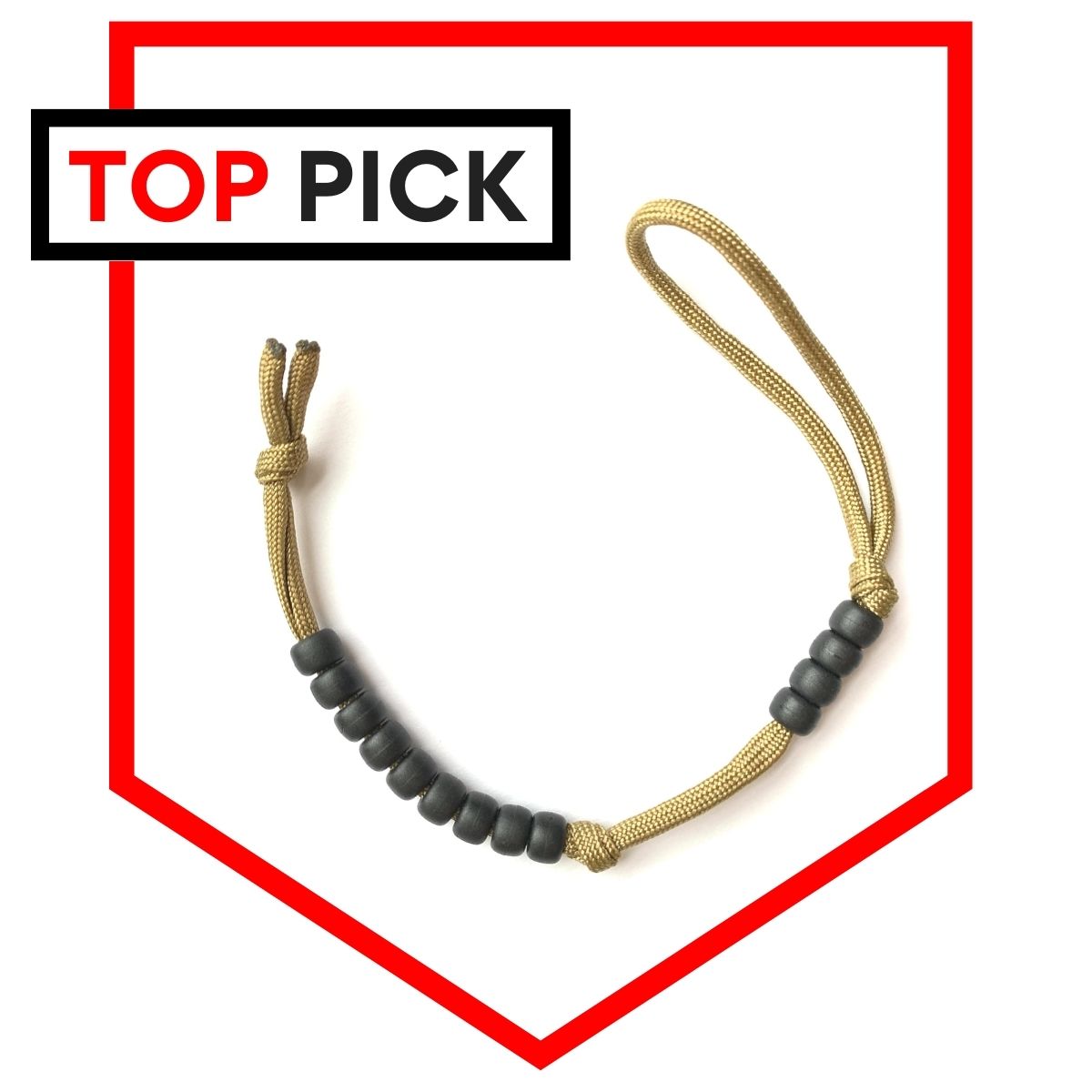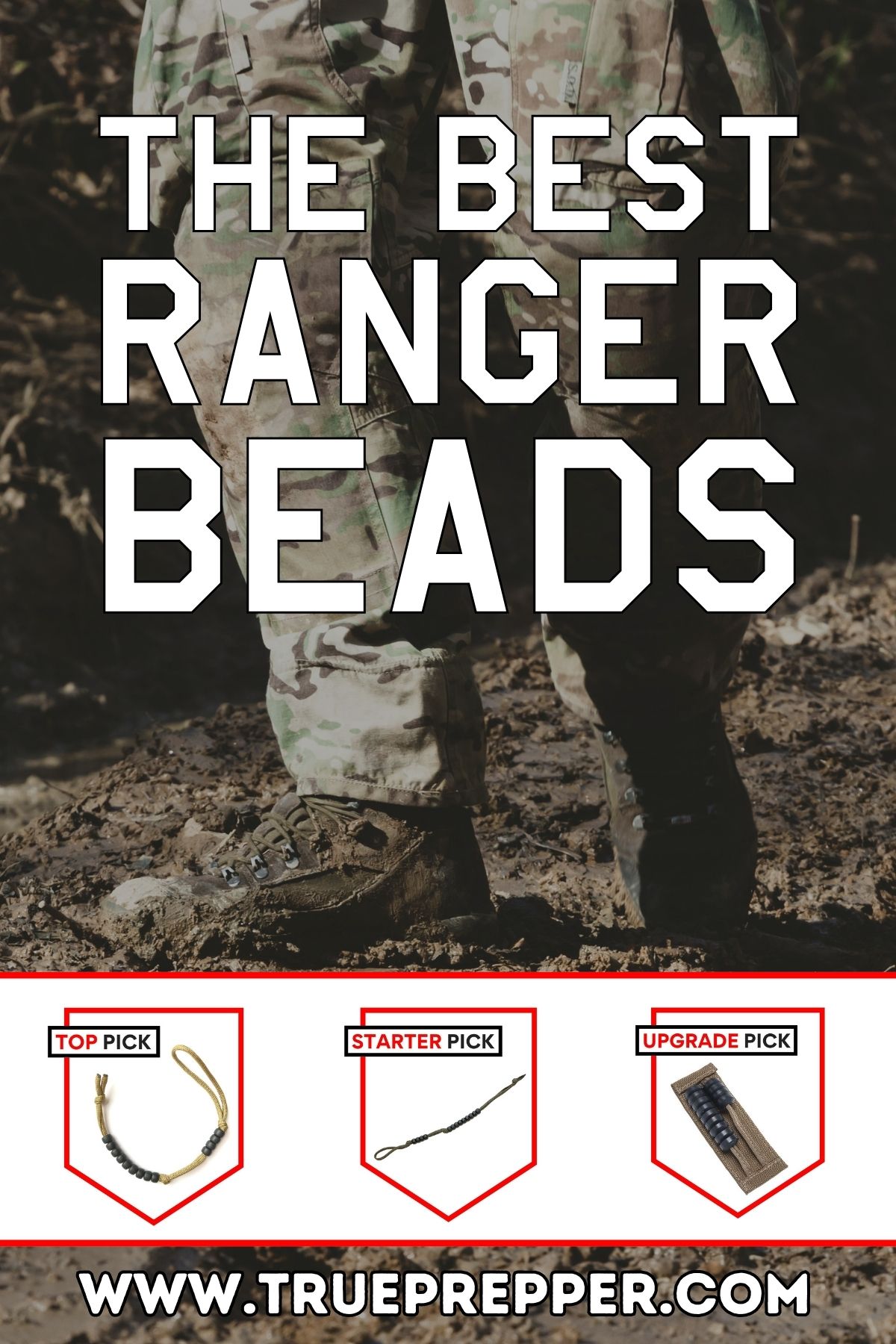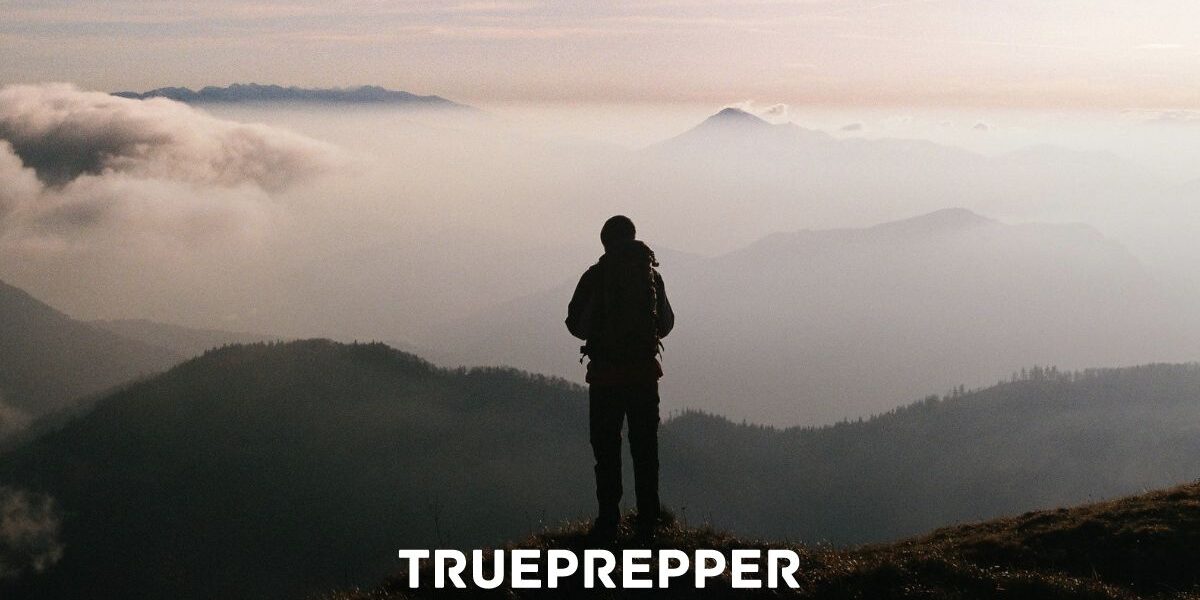Best Ranger Beads for Pace Counting
Navigation skills are easy to learn but hard to master. Once you’ve figured out map reading and how to use a compass, a common technique to determine the distance you travel is pace counting. Ranger beads, or pace counting beads, are simply an abacus on a string that lets you count to very large numbers based on how many strides you take. They are simple tools to use and are easy to figure out with a little practice. There is a slew of brands and options to choose from when it comes to pace counting beads.
This is where we come in. We’ve researched the best ranger beads, tested each of them, and now the results are in: the overall best, a budget option, and an upgrade option. If you need to keep track of your position based on your pace count, one of our suggestions is up to the task.
Contents (Jump to a Section)
The Best Ranger Beads
Matte Ranger Beads
Matte Color, Tight Action, and Lightweight
Everything you want from pace counting beads with none of the fluff.
*Price at time of publishing; check for price changes or sales.
Lethalife is just a handful of US military veterans running a small business, so it’s pretty cool that the top performer ended up being their ranger beads. Their beads are consistent, and you can tell they are made with attention to detail. Matte black beads are non-reflective and the stringer is true 550 paracord (gutted for weight and bead tension). The beads hold their place well but are not difficult to move with one hand.
If you need the best, pick up some Matte Ranger Beads for your kits, and don’t look back- just keep counting your way forward.
Budget Ranger Beads
Green Omega Ranger Beads
Strong, Inexpensive, and Dependable
Count your pace and support Vets with these ranger beads that get the job done for cheap.
*Price at time of publishing; check for price changes or sales.
These are probably the cheapest you’ll find ranger beads anywhere unless you already have the paracord and beads sitting around your house and make it on your own. That’s why we were surprised to see that these actually perform quite well. Like our top pick, they are veteran made and these guys even donate 10 cents of every sale to the VA National Center for PTSD. Not a lot, but pretty cool considering they are the cheapest option anyways.
If you are really trying to stretch your budget, they also give bulk quantity discounts so you can grab Green Omega Ranger Beads for all your kits and you won’t regret it.
Upgrade Ranger Beads
TNC Ranger Beads
Convenient, Compact, and Versatile
Hook and loop fasteners let you slap these beads anywhere on your kit making them a versatile choice.
*Price at time of publishing; check for price changes or sales.
Unless you’ve seen these, you haven’t seen ranger beads this versatile before. With the ‘hook and loop’ patch on the back, you can put these anywhere you could slap a Velcro patch. The beads stay put well and are easy to move back and forth due to their wider shape.
TNC Ranger Beads are a solid pickup for your survival kit and will be the talk of your survival community.
Everything We Recommend

Everything you want from pace counting beads with none of the fluff.
Where to Buy
*at time of reviewing

Count your pace and support Vets with these ranger beads that get the job done for cheap.
Where to Buy
*at time of reviewing
The Beads We Compared
Our research narrowed the field down to the several pace count bead brands and types that we tested: Lethalife, RedVex, TNC, Green Omega, Tac Shield, Coopers Bay, Wardog, and more.
You can see our full list of review criteria below in the What to Look For section, with an explanation for each.
We did not consider anything other than simple abacus-based pace counting beads. GPS, pace counting apps, etc are all great but are not good methods for all survival scenarios.
We’re always looking for new and better equipment, so if you have pace counting beads that you swear by let us know down in the comments. We review most of our tested gear annually, so we can always get it in the next roundup round and see if it makes the cut and we can see if it will beat out our top picks.
What to Look For
The best ranger beads have several important features to look for:
- Value
- Functionality
- Durability
- Size & Weight
- Versatility
When you get the right blend of these, you can find a truly reliable pace counter that will let you efficiently keep track of your position without fumbling around. Below, we break down what each of these features means for a dependable counter that you can trust with your life:
Value: Cost vs. Benefit
The amount of money you spend on something like some rope and beads shouldn’t bust your entire budget. Paracord and beads are both inexpensive, so it shouldn’t be too big of a concern, but don’t get had. Budget according to your risk and your needs rather than just spending lavishly.
On the flip side, you don’t want to go too cheap or just plain get the wrong thing. There are plenty of cheap imitation pace counters out there where the beads slide all around making you lose count. If that sounds like something fun to deal with in a survival situation, then avoid our advice and get the cheapest thing you can find!
You never want to spend too much money on one resource, especially something like ranger beads. It’s better to diversify your tools and preparedness gear to make sure you are covered for a wide range of scenarios. There is a sweet spot where you get high value out of the best features with not-to-high of a price, which is where our top pick sits.
Functionality
The single most important consideration for a pace counter is how well it works, or its effectiveness. You want the beads to be tight, but not too tight where the beads are not easy to move with one hand.
Some pace counters are slightly easier to use by using textured, matte, or bell-shaped beads so they are easier to pull and easier to tell which direction they are.
Durability
Using higher-quality materials can improve durability. Most beads are plastic, but the type of plastic can affect how durable they are. Weather resistance and UV resistance are all priorities for beads since you can use them in a wide range of environments.
The cord used on pace counters should be flexible, and paracord is always a solid choice. Melt knots and ends to make sure there is no unraveling.
Size & Weight
You want your ranger beads to be as lightweight as possible. The whole point of them is that you will be carrying them very long distances and measuring those distances. Ounces matter when it comes to hiking with equipment, so keep everything lightweight- including your pace counter!
Versatility
One of our picks shot up to the top because of its versatility. Adding different ways to attach pace counters improves versatility. Technically, pace counter bracelets improve versatility as well- but we argue that this impacts their functionality. In practical situations, we found beads are easily jostled and brushed when they are on your wrist, which can make you lose count.
How to Use Ranger Beads
Pace counting beads are a very simple tool- it’s just some rope and some beads that you use like an abacus to count to very high numbers for long distances.
Using them, however, takes a little bit of know-how. There are two main ways to use them: count pace or count distance.
- Counting Pace: Count your paces (usually 10 paces, which is 20 steps) and slide one of the nine beads. If you go to move a bead down and all nine are down, move one of the four beads down instead and return the nine beads up. You’ll need to know how much distance you cover per pace (or per bead) to calculate the distance traveled on the fly.
- Counting Distance: Every time you travel 100m, slide down one of the nine beads just like counting pace. This method will let you count all the way to 5000m using your ranger bead ‘abacus’- but you have to know how far 100m is in various terrains. You’ll still be counting your paces, but you should know how many paces you take for 100m in various environments.
Craig does a great job of breaking down how to use ranger beads to keep a pace count:
Who Needs Ranger Beads?
Ranger beads aren’t a prepping and survival staple, but they are extremely useful to have around. You won’t find them in our essential item lists, but you will find them as a suggested addition in almost every mobile kit we cover.
Ranger beads are extremely lightweight and a versatile counting tool for things other than pace counting too, so the drawbacks of adding them to your kits are slim.
We suggest that you consider adding for:
Of course, you need to know how to pace count before you put it in your kit. Some ranger beads, like our upgrade suggestion, are even more versatile and are easy to tack onto any kit with the hook and loop fastener.
How We Review Products: We research thoroughly before selecting the best products to review. We have vast prepping and survival experience and bring in outside experts when needed. Hours on end are spent testing gear in stressful conditions and using specialized testing gear to verify claims. We assign performance criteria and impartially rate each tested item. Learn more about how we test.
Sources and References
All of our experience and the testing we do to determine the best ranger beads is useless without listing our research sources and references. We leaned on these for the book knowledge that we paired with our hands-on testing and practical military and prepping experience:
Elliot, L., et al. (2006). Tactile Guidance for Land Navigation. ARMY RESEARCH LAB ABERDEEN PROVING GROUND MD HUMAN RESEARCH AND ENGINEERING DIRECTORATE. (Source)
Kojima, T. (1954). Japanese Abacus Use & Theory. Charles E. Tuttle Co. Tokyo, Japan (Source)
Elliot, L., et al. (2011). Field-Based Validation of a Tactile Navigation Device. IEEE Transactions on Haptics. Volume 3. Issue 2. Pages 78 – 87. (Source)
The Final Word
Finding your way accurately and efficiently is important when you are surviving on the move. Relying on technology may not be an option, and basic land navigation is easy to learn. This is why ranger beads are popular among preppers and survivalists.
To go along with ranger beads, you should also consider a few other tools to help with your survival navigation:
- How to Get a Free Survival Map of Your Local Area
- The Best Paracord for Prepping and Survival
- Bug Out Bag List | 44 Essentials
We presented quite a lot of information, but as always: if you have any questions let us know and we would be happy to help. Our research and testing found that Lethalife Ranger Beads are the best option given their value, functionality, durability, size/weight, and versatility.
If you pick up one of our suggested ranger beads- make sure you get it out and get to know how to use it before you need it. Don’t let your survival gear sit in your kit without getting familiar with it- use it on your next camping trip, or just around the yard. You’ll need to first set the length of your standard pace, so it really is important to get familiar with it.
Keep exploring, stay prepared, and be safe.
You’ve Been Missing Out
Join the 2+ million preppers that rely on our prepping advice by subscribing to TruePrepper.- Practical guides and tips
- Useful survival giveaways
- Free, forever
- < 0.4% of people unsubscribe



